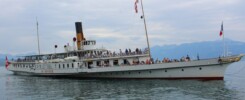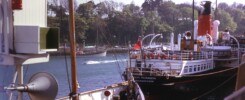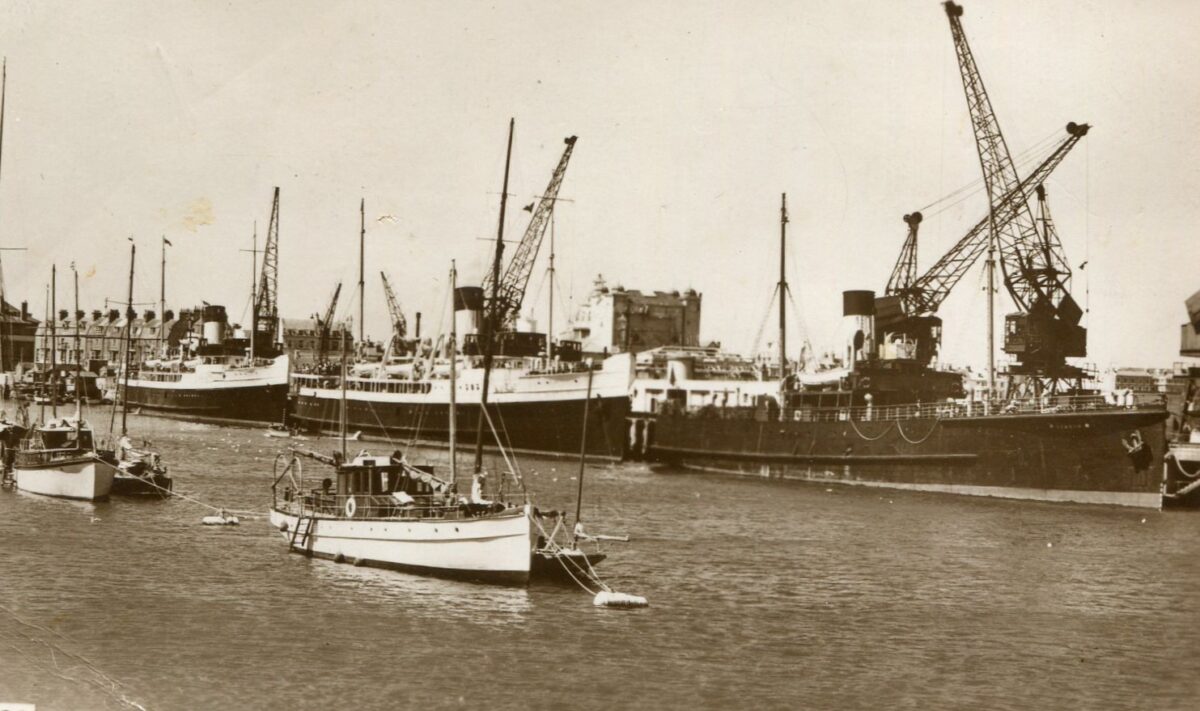
Although paddle steamer operator Cosens & Co of Weymouth had a pretty near monopoly on excursions to sea from Weymouth, if you exclude the motor boat trips from the beach and the harbour, they did not have the field entirely to themselves even amongst larger craft. For example, the railway owned Channel Island mailboats also offered excursions during the season and being larger, more commodious and altogether much better appointed than any paddle steamer Cosens ever owned inevitably creamed off the more moneyed market segments from Weymouth for the day trip trade.
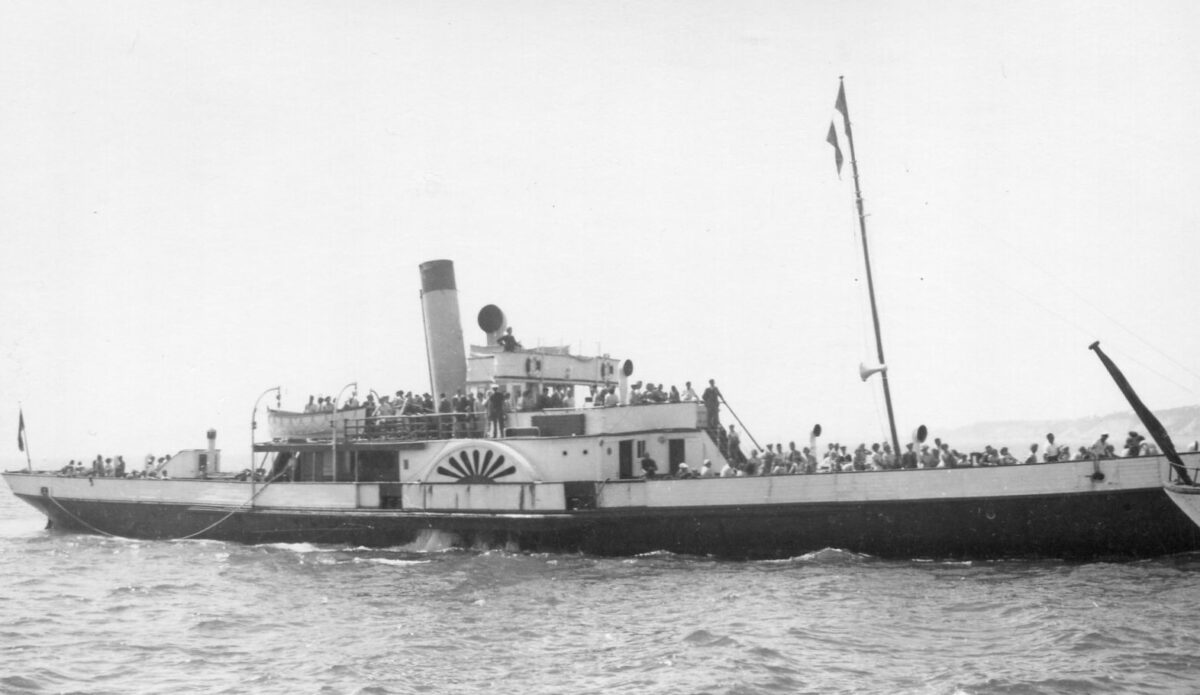
If you were not that interested in paddle steamers and were a visitor or local who just wanted a nice day out from Weymouth travelling to some interesting not to say exotic destination by sea, and could afford it, would you choose the Victoria, (above) which in 1952 was offering some day trips along the Dorset coast from Weymouth to Swanage and Bournemouth or Swanage and Totland Bay, Isle of Wight, or………………………
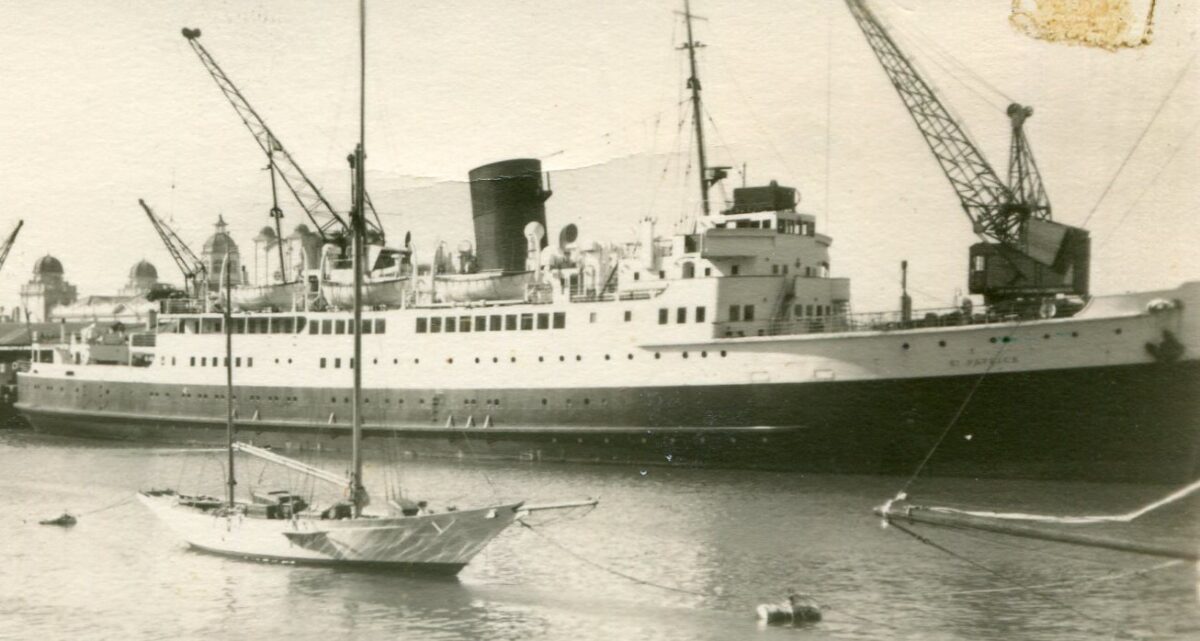
…..or take a day trip going slightly foreign from Weymouth to Guernsey on St Patrick which was a ship in an altogether different class both in terms of size, luxury and amenities? And with a capacity of more than a thousand that was quite a lot of passengers the Channel Island mailboats could cream off for the day trip trade who might otherwise have sailed on a Cosens paddle steamer.
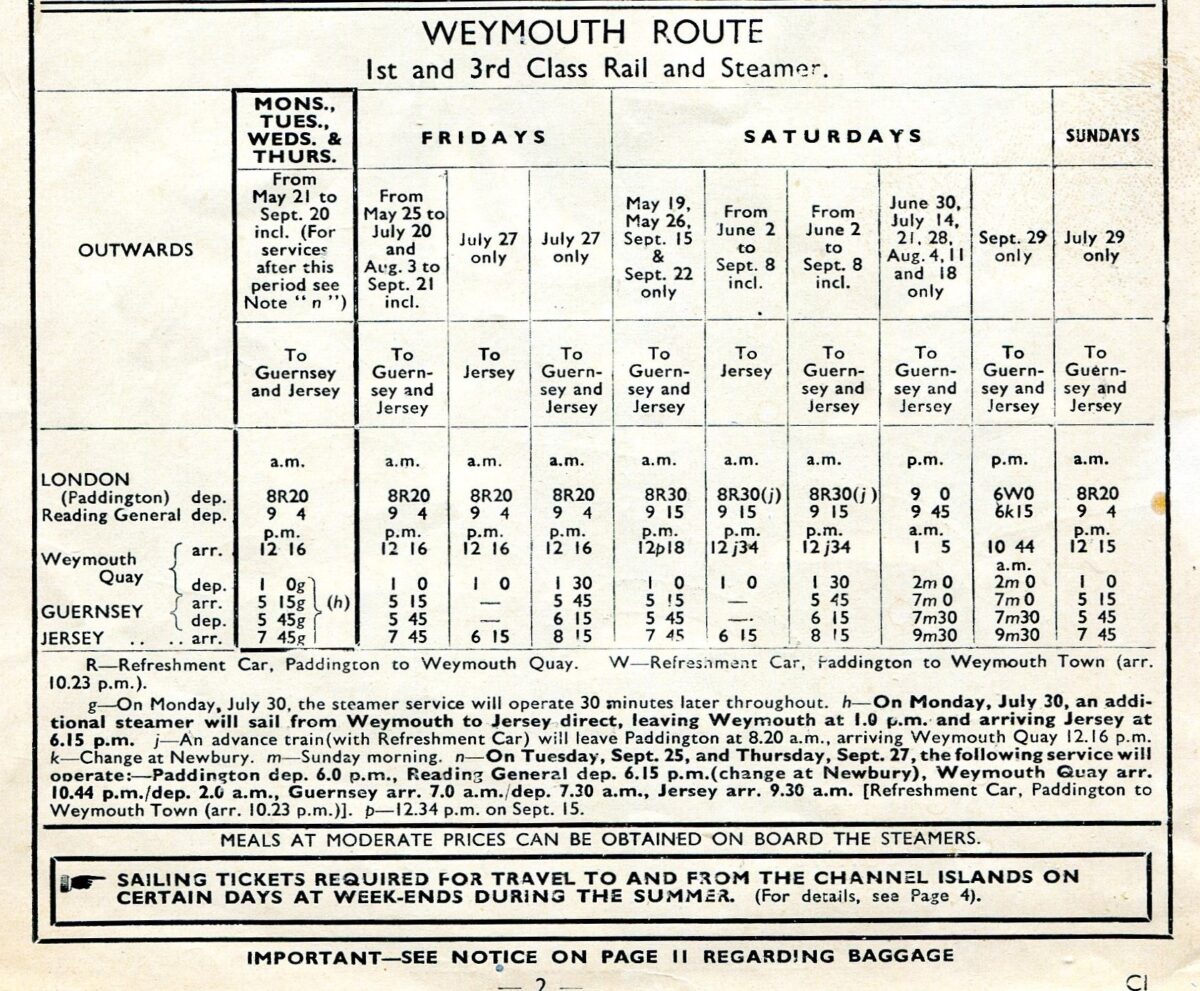
The usual summer Channel Islands service from Weymouth in the 1950s was for one ship to go out on Monday, come back on Tuesday, out on Wednesday, back on Thursday, out on Friday and back Saturday with Sunday off. The second ship went in the opposite direction on each of these days and also had Sundays off. That’s three round trips to the Channel Islands per week for each of two ships.

The problem for the railway was that they really needed the capacity of a third ship on change over day of Saturday to shift the crowds but that third ship was not needed on the main ferry service at other times. So what to do with her?
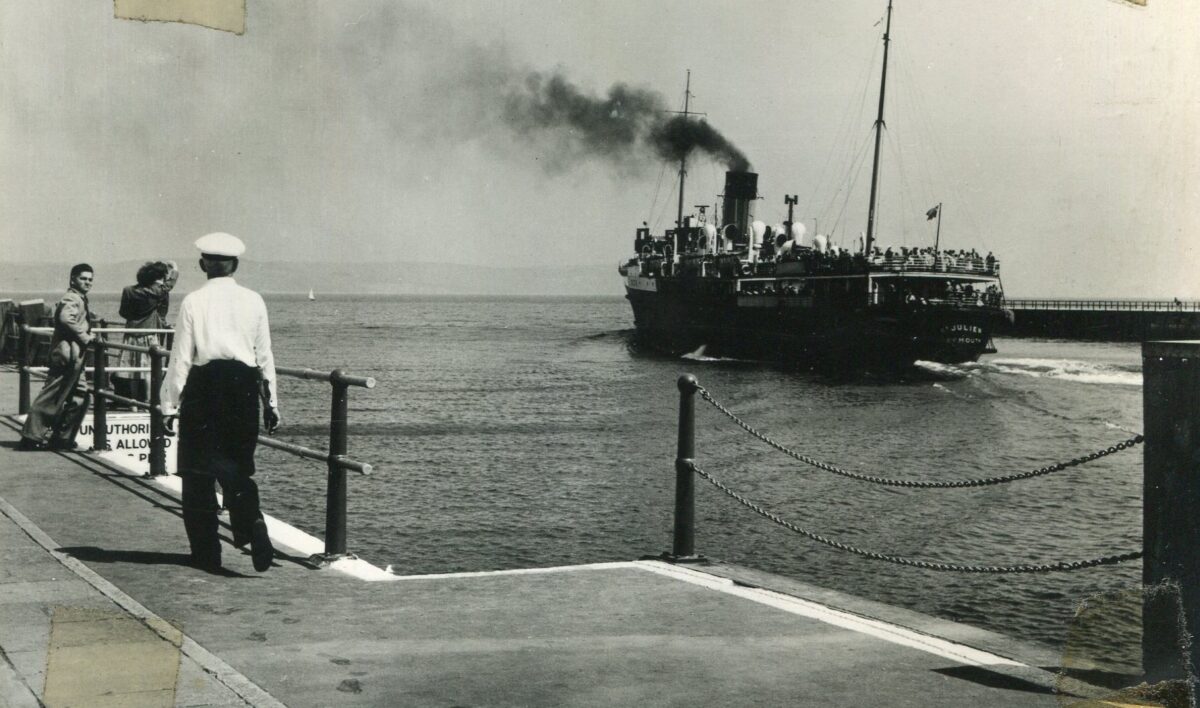
The answer was excursions. To make up the hours and get fare paying use for her before the war one of the mailboats spare from the regular ferry service offered non-landing coasting cruises either round Portland Bill and into Lyme Bay or along the Dorset Coast past Swanage and on into Poole Bay towards Bournemouth as well as day excursions to the Channel Islands, and sometimes Cherbourg, all of which competed for the available trade with Cosens’s paddle steamers
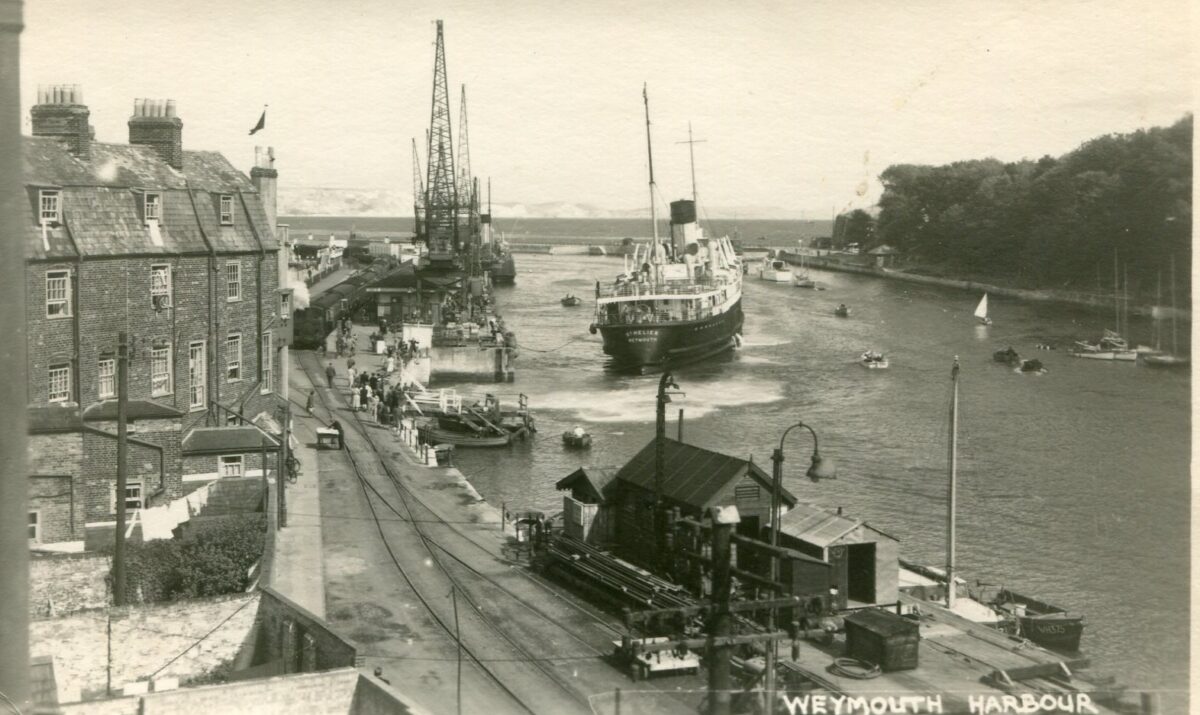
After the war the coasting excursions were not revived but the railway continued to operate day trips from Weymouth and Torquay once a week each across the Channel which continued until 1964. They were revived outside railway ownership in 1965 by the Lisieux and in 1966 by La Duchesse de Bretagne. The third ship therefore had two excursions plus one ferry service each week so that all three mailboats made three round trips per week.
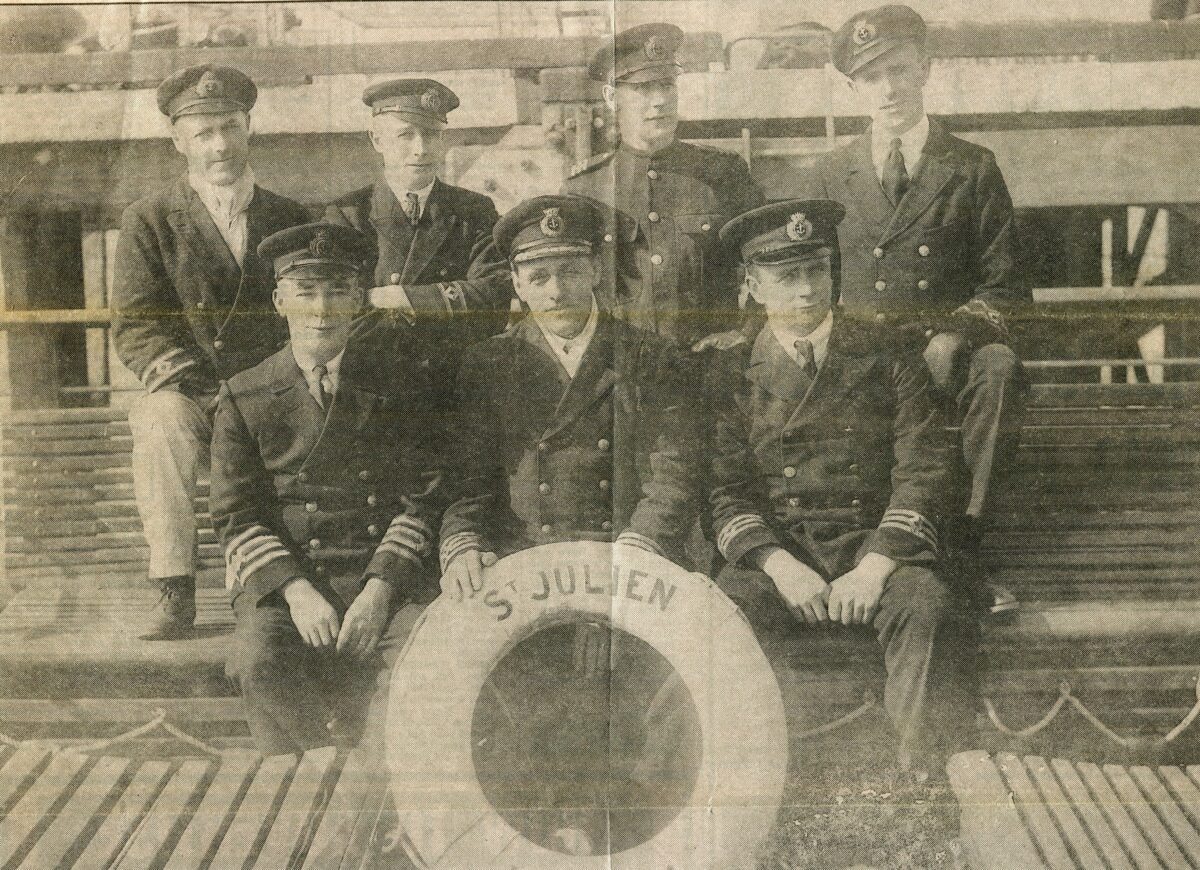
It was a different age back then when people often stayed with the same employer for most if not all their working lives with promotion only coming on dead man’s shoes. Some hit it lucky being just in the right place at the right time to get made up. Some didn’t and remained chief officer or cargo ship master for most, if not all, their careers never being promoted mailboat master. Two of the lucky ones who just hit it right were Captains Leyghton Richardson and Reginald Pitman.
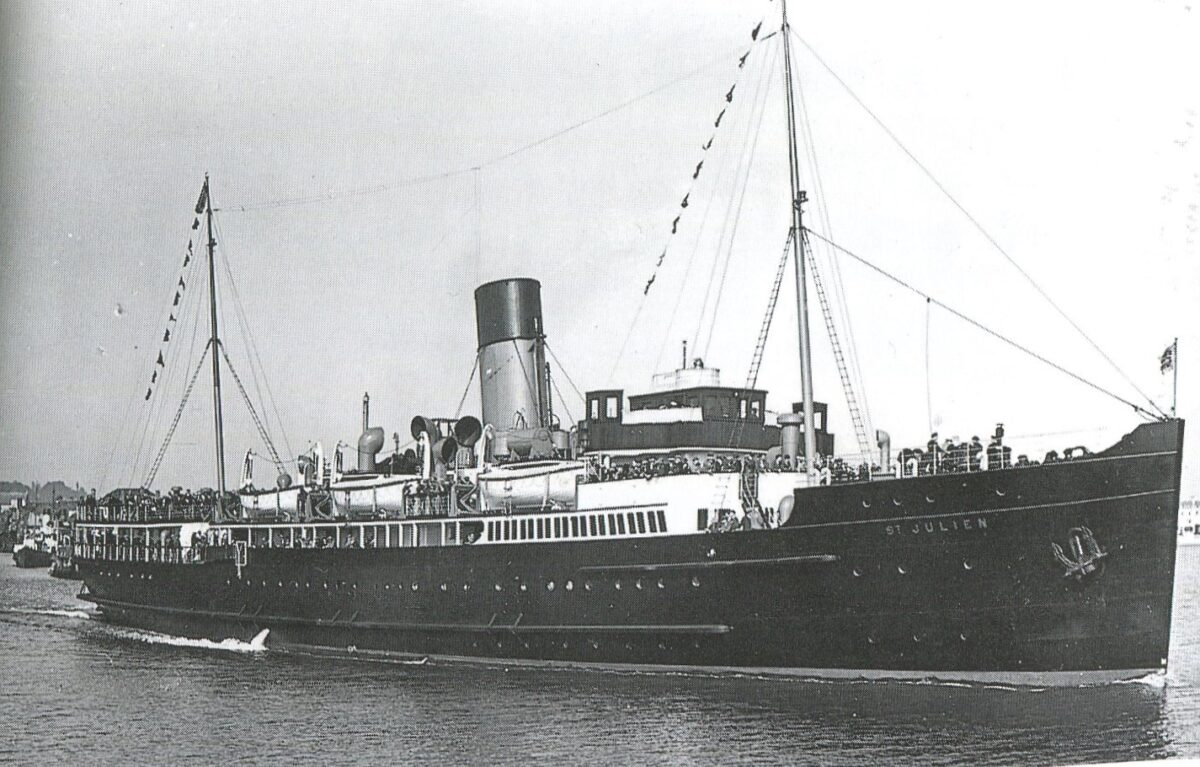
Capt Langdon, master of the then only two year old St Julien died aboard his ship on her way back from Guernsey to Weymouth on 27th September 1927. St Helier’s master Capt Mulhall took sick not long after and died six months later at his home in Weymouth on 17th March 1928. The 36 year old Capt Richardson was promptly promoted mailboat master to replace Capt Langdon. The 34 year old Capt Pitman was made up to mailboat master in November 1927 to replace Capt Mulhall. The young pair would continue as the two senior masters of the Weymouth Channel Island fleet St Helier, St Julien and the two St Patricks, staying with their ships during war service, and effectively blocking promotion for others to the top jobs for the next thirty years.
Capt Richardson retired in September 1955 aged 63 and Capt Pitman in April 1959 aged 65. Both continued to live in Weymouth for the remainder of their lives looking out on an ever changing harbour scene. Capt Richardson died in March 1968 aged 76 by which time Cosens had withdrawn from operating their paddle steamer excursions regularly from Weymouth in 1962 and completely in 1966.
Capt Pitman lived on until April 1986 when he died aged 96 by which time not only were the new mailboats Caesarea and Sarnia, which had replaced his beloved St Helier and St Julien in 1960/61, also long gone but Sealink, successor to the railway shipping services at Weymouth, had abandoned their services to his beloved Channel Islands on which he was first appointed master nearly sixty years earlier.
Tiny Point of Detail 1: Although other and sometimes chartered tonnage helped out from time to time, particularly in shifting seasonal produce like tomatoes and flowers, it was Roebuck and Sambur which were the mainstay of the year round Channel Islands cargo trade from and to Weymouth between 1925 and 1964/65.
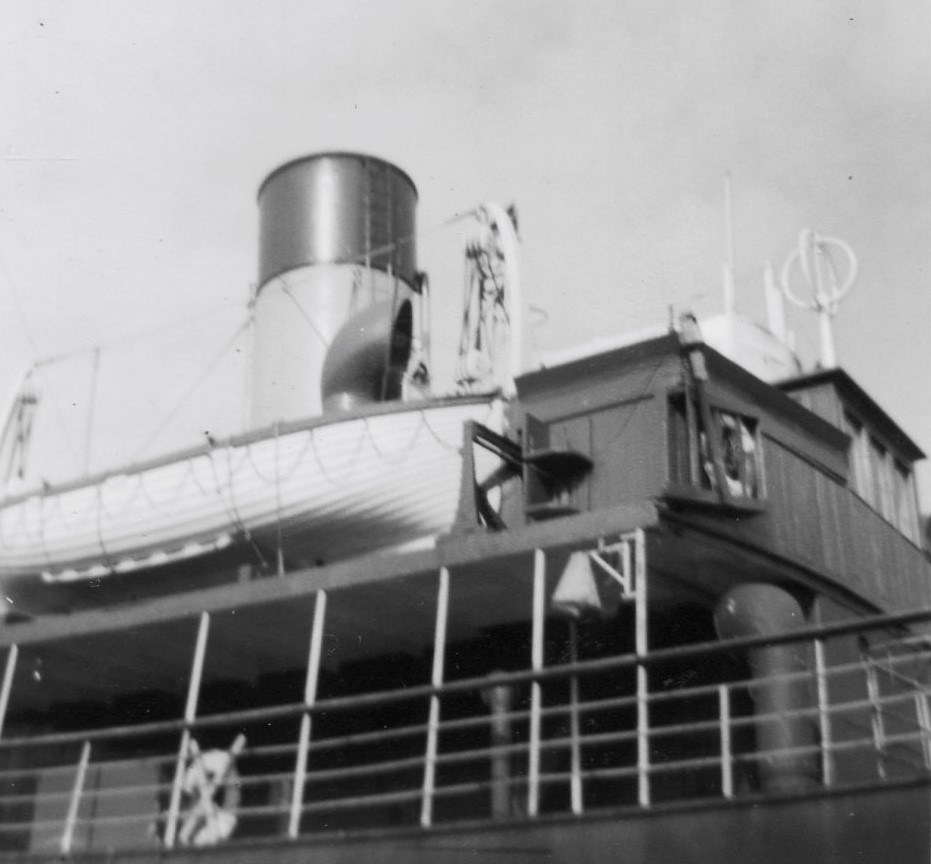
Generally speaking one or other of them served one island at a time with one leaving Weymouth at 10am on Mondays, Wednesday and Fridays arriving in St Peter Port, Guernsey around 4pm. Depending on the cargo working sometimes they turned round straight away and came back to Weymouth overnight. Sometimes they stayed on and came back the next morning. This positioned the ship alongside in Weymouth on Tuesday, Thursday, Saturday and Sunday nights which was good news for any Weymouth based amongst the crew which most of them were.
The other generally left St Helier, Jersey at 11pm on Sunday, Tuesday and Thursday evenings for Weymouth arriving early next morning and made the return trip leaving Weymouth at 11pm on Monday, Wednesday and Friday evenings thus spending six nights a week at sea and one night alongside at St Helier which was good news for any Jersey based crew of which there were some.
So like the mailboats the cargo ships also operated three round trips a week.
Tiny Point of Detail 2: So far as I can see Captains Richardson and Pitman were the longest serving Weymouth based mailboat masters ever notching up 28 and 31 years respectively in command of St Helier, St Julien and St Patrick. There was a need for an additional mailboat master plus one other for occasional relief duties each season but none of them served for anywhere near this length of time. These included Captains Sanderson (1931-1940), Joy (1933-36), Bond (1937-1952), Larbalestier (1939-1948), Goodchild (1953-1962), Hawkyard (1949-1953), Newton (1953-1968), Cartwright (1956-1967) and Walker (1958-1974).

After a couple of years as relief Capt Newton was promoted permanent mailboat master aged 52 on the retirement of Capt Richardson in 1955. In 1963 he and his wife Molly bought a house overlooking Portland Harbour five doors down from where my family and I lived in Old Castle Road. He was a friendly and helpful neighbour. For example one day my sixteen year old self was walking down the road carrying an outboard motor for my dinghy. He spotted me from his car, immediately drew up and insisted on putting it in the boot and taking us both on down the road to the sailing club where I was bound to save me having to carry it. Well it was quite heavy and I probably looked as though I was struggling. He was a really nice man. I liked him a lot.
Tiny Point of Detail 3: There was a little bit of a kerfuffle amongst Weymouth masters between November 1973 and September 1974 when Captains Walker, Caws, Picot, Laity and Creed all retired within a year of each other.
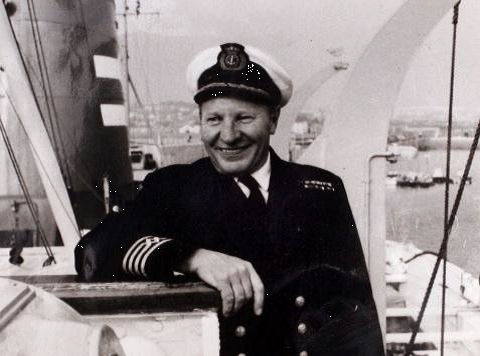
This coincided with an expansion of the fleet with Falaise joining the Caesarea and Sarnia to inaugurate a car ferry service to Jersey in 1973 and Maid of Kent being drafted in to open a new car ferry service to Cherbourg in 1974. This of itself required more masters and so the two together opened the door for a whole new generation of much younger captains to be promoted, some still in their early thirties, just as had been the case for Captains Richardson and Pitman nearly half a century earlier. Between 1973 and 1979 no less than eighteen new passenger ship masters were promoted for the Weymouth services including Captains Baker, Escudier, Barker, Macmillan, Attwood, Leale, Mills, Milward, Hanfield, Scott, Davies, Evans, Bill, Craythorne, Weston, Filor, Wallbridge and Musset.
Tiny Point of Detail 4: Stan Musset, brother of Capt Musset, worked for Texaco and very kindly arranged for his employer to donate a supply of lubricating and cylinder oils to Kingswear Castle in her early Medway years for which we were very grateful.
Tiny Point of Detail 5: The boom time for promotion to passenger ship master at Weymouth in the 1970s did not last. By the mid 1980s Sealink was already in retreat and by 1989 had completely closed down all its operations from the port with redundancy notices being handed out right left and centre to all and sundry including masters. It was a bit like the collapse of the railway cross Channel services from Southampton in the 1960s but on a grander scale. Back then with the closure of the routes from Southampton to the Channel Islands, Le Havre and St Malo other work had to be found for the Southampton based masters elsewhere in the British Railways fleet around the country or they were made redundant. In 1963 Capts Kroon and in 1964 Killinger were transferred to Dover. In 1964 Capts Campbell and Bowen were moved to Newhaven. And in 1966 Capts Caws, Picot and Creed joined the roster of Weymouth based masters. Capts Hatchley, Le Huquet, Moir and Wolley were all made redundant.
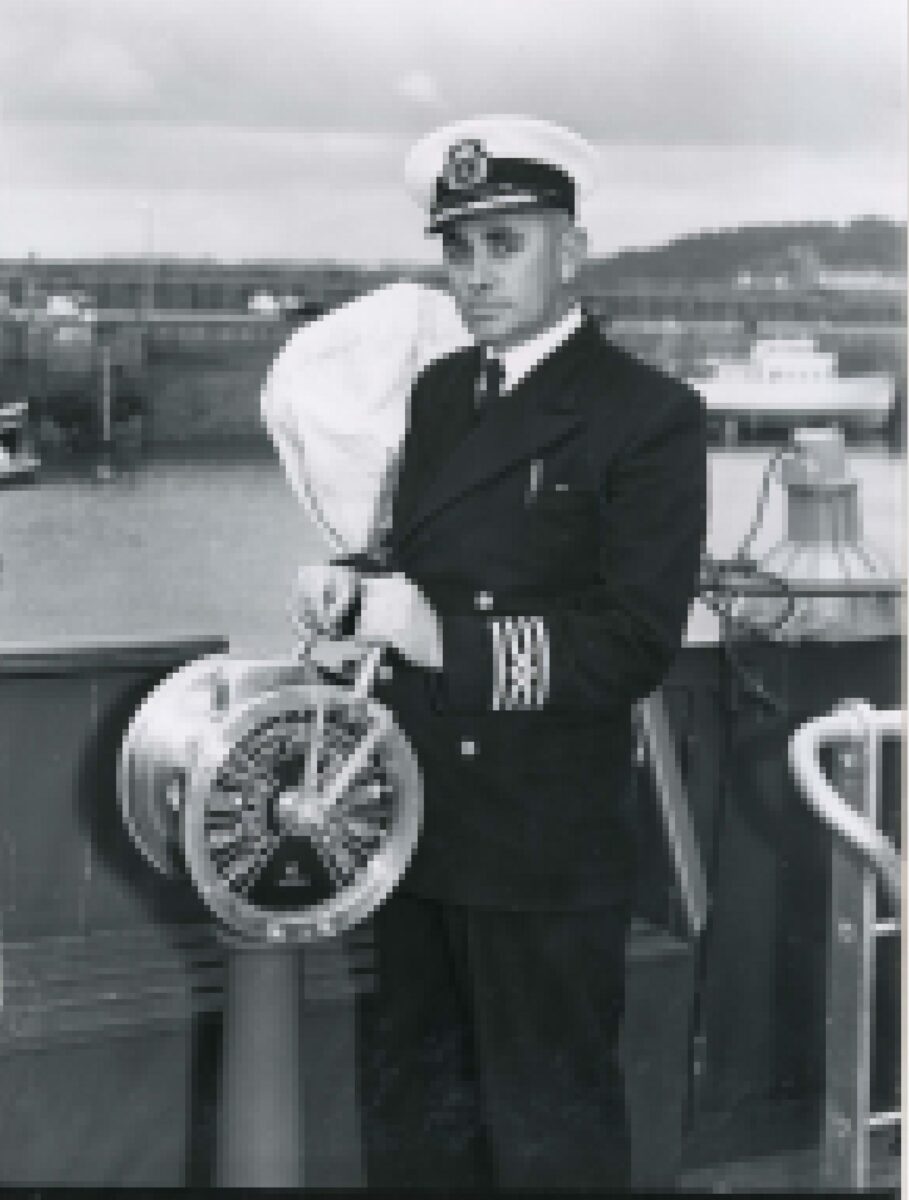
One of the lucky ones was Capt Wolley. He found further employment as Harbourmaster at St Peter Port in Guernsey for which one of his duties was to examine the up and coming Sealink masters and mates for their Guernsey Pilotage Exemption Certificates. He remained in post until at least 1977.
Tiny Point of Detail 6: In those days unusually, and possibly uniquely around the coast, the white over red Pilotage Exemption flag for Guernsey flown on any ship with a PEC holder aboard had to have the individual number of any particular master or mate sown into it. This was a practice dating back to before radio communications so that with a telescope the Harbourmaster could identify who was captain of any ship being piloted by her own master or mate before it docked.
Tiny Point of Detail 7: In life sometimes people are lucky. Sometimes that good luck is elusive. There is no doubt that Captains Richardson and Pitman were absolutely in the right place at the right time in 1927 whilst still young men and so enjoyed very long and highly successful careers as Weymouth mailboat masters. But in other respects life can be fickle. Capt Pitman was appointed MBE “For outstanding services to mailboats” in 1955. Captain Richardson was not. I wonder what he thought about that.
Kingswear Castle returned to service in 2023 after the first part of a major rebuild which is designed to set her up for the next 25 years running on the River Dart. The Paddle Steamer Kingswear Castle Trust is now fund raising for the second phase of the rebuild. You can read more about the rebuilds and how you can help if you can here.
John Megoran

